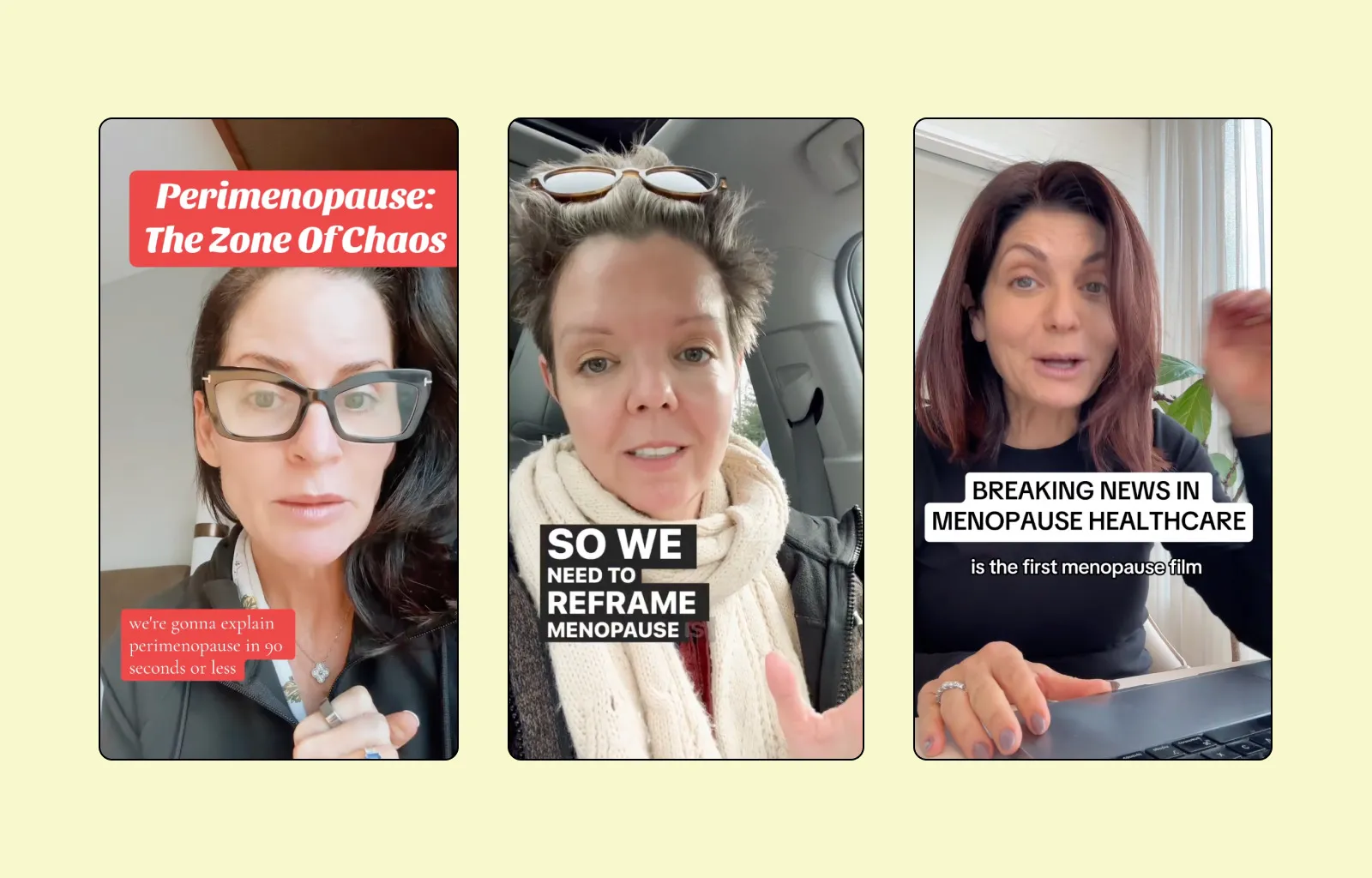Hormone Guide: Estrogen

What is estrogen?
Estrogens are a group of hormones that promote sexual and reproductive development in women. They’re produced in the ovaries and, to a lesser extent, in fat cells, adrenal glands, breasts, the liver and the brain. While there are several different kinds of estrogen–among them, estrone, estradiol, and estriol –they’re most often collectively referred to simply as “estrogen.”
Estrogen plays a key role in your brain, bone, heart and skin health. It can also influence your mood, fat distribution and cholesterol levels. During your reproductive years, estrogen promotes the development of secondary sexual characteristics (like breasts) and works with another hormone, progesterone, to help regulate your menstrual cycle.
Estrogen receptors are proteins found inside cells, and they exist throughout the body on different organs. When estrogen binds to these receptors it effects changes in your health. For example, estrogen binding to receptors in a region of your brain called the hypothalamus is believed to play a role in regulating your body’s temperature.
Why does estrogen drop as we approach menopause?
As menopause nears, the body’s estrogen supply will begin to fluctuate and decline. This is caused by a depletion in the number of estrogen-producing follicles in the ovaries, which can lead to a drop in estrogen production of 80 percent or more.
What are the short-term (acute) symptoms of fluctuating estrogen levels / low estrogen?
The rapid fluctuation and drop in estrogen is what is responsible for the miserable symptoms of menopause, like hot flashes, night sweats, mood imbalances, weight gain, thinning skin and hair, vaginal dryness, and sleep disturbances. In the short-term, you might experience the following symptoms:
- Hot flashes/night sweats: Less estrogen binding to the hypothalamus can cause it to try to cool your body unnecessarily, triggering a sudden increase in blood flow to the skin (called vasodilation). This is known as “thermoregulatory dysfunction,” and can lead to a hot flash.
- Vaginal dryness: The vagina is rich in estrogen receptors that affect pH, elasticity and lubrication during arousal. Less estrogen binding to these receptors can lead to symptoms associated with vaginal dryness and painful sex.
- Weight gain: While more research is needed, appetite, metabolism, and fat distribution may all be influenced by lower estrogen levels.
- Brain fog: With less estrogen available for binding, the brain’s rich supply of estrogen receptors can become under-stimulated and may lead to forgetfulness, as well as difficulty concentrating and thinking clearly.
What are the long-term effects of low estrogen?
In the long-term, the following chronic conditions may emerge:
- Osteoporosis: In the years after menopause, women can lose up to one-fifth of their bone mass. Bone cells depend on estrogen to grow and replicate. When estrogen levels are lower, the body’s reabsorption of old bone can overtake the growth of new bone.
- Cardiovascular disease: Estrogen has a proven beneficial effect on cholesterol. A drop in estrogen can cause a rise in LDL cholesterol (the bad kind) and a dip in HDL cholesterol (the good kind). This can cause a buildup of fat and cholesterol in the arteries, which can in turn increase the risk of heart attacks and strokes.
- Cognitive changes: Because estrogen levels play a role in neuronal growth and the modulation of neurotransmitter systems, some (though limited) research suggests cognitive function may be impaired with lower estrogen levels.
- Osteoarthritis: Since estrogen is believed to help protect the cartilage between bones and joints from inflammation, the risk for developing osteoarthritis goes up in menopause.
- Body composition changes: Some studies suggest weight gain may accompany menopause. Several reports suggest that the effect of estrogen on body weight is either neutral or slightly beneficial.
- Skin changes: Because estrogen supports the collagen content of the skin, less estrogen can lead to more wrinkles and a loss of elasticity.
How is low estrogen determined?
A doctor can diagnose you based on your description of your symptoms and health history. While blood work can be done, there is no evidence that treating women based on blood work is more effective than treating women based on their symptoms. In fact, most women will find that their hormone levels are in the ‘normal’ range despite still feeling off and experiencing symptoms. Women have an average of 40 years of experience getting to know the ups and downs of their menstrual cycles by the time they get to menopause. Do you need a blood test to confirm you are having hot flashes, insomnia, or anxiety around your menstrual cycle? Likely not!
What is estradiol?
Estradiol is the predominant form of estrogen in women and is produced by your ovaries. This is why the most effective menopause treatments use estradiol to manage menopause symptoms. Replenishing estradiol can balance your hormones and manage menopause symptoms.
Estradiol is typically taken as an oral pill, a patch or a gel. It’s scientifically proven to eliminate hot flashes completely in up to 75% of women, and to reduce the frequency and severity in the remainder.
How is it administered?
Estradiol works by replenishing the estradiol in your body. It can be administered in the following ways:
- Transdermal: Skin patches deliver estradiol directly into your bloodstream. This method is associated with a lower risk of blood clots.
- Oral: When taken in pill form, estradiol is metabolized by your liver before it reaches your bloodstream. This results in a very slight (less than 1 percent) increase in the risk of a clot or stroke compared to transdermal patches.
- Systemic topical: Creams or gels may be applied to the skin and function as a systemic (whole body) treatment–just like the transdermal or oral methods.
- Local topical: Estradiol can be administered through a ring, a suppository or a cream inserted into your vagina. Vaginal estradiol is typically used to target dryness and/or painful sex. Because the application is local and only to the vagina, this delivery method is associated with fewer risks and side effects than systemic treatments
What’s the difference between plant-derived estradiol and conjugated estrogen?
Plant-derived estradiol comes from plant sources, usually soy and yams. It’s modified to be structurally identical to the estradiol produced in your body. Conjugated estrogens are extracted from animal-based sources, and typically contain many different kinds of estrogens.
Both of these forms of estrogen are effective at addressing menopause symptoms including hot flashes, night sweats and vaginal dryness. EverNow uses plant-derived estradiol as first line for treatment.
Risks and Benefits
Like any medical therapy, hormone therapy has risks and benefits. Clinical guidelines outline that if you’re within ten years of menopause and/or under 60 years old without additional risk factors (such as genetic predisposition for breast cancer), adverse side effects are uncommon.
For women who still have their uterus, progesterone is always prescribed with estrogen to protect the uterine lining. Progesterone prevents the development of abnormal cells.
The most comprehensive study, the Women’s Health Initiative found that estrogen therapy over five years decreased breast cancer risk by 2.5 cases per 1000 women, and that combined estrogen and progesterone therapy over five years increased breast cancer risk by 3 cases per 1000 women. There are rare cases of stroke and blood clot, but fewer cases of diabetes, bone fractures and death.
What are some non-prescription treatments for low estrogen?
- Diet/Nutrition: In some women, phytoestrogens (plant estrogens) from soy, yams, flax, and lentils can be converted to a more active form during digestion and mimic estrogen within the body. Studies have shown, for these women, reduced number of hot flashes, less excessive sweating, and fewer palpitations. Remember that soy and yams are the base for estradiol hormone therapies, too!
- Supplements: Black cohosh, dong quai, and vitamin E are supplements that have also shown some evidence of alleviating the symptoms caused by low estrogen. Their long-term effectiveness needs more research to reach any scientific conclusions.
What does the research say?
- UpToDate provides a comprehensive overview on treating menopause symptoms with hormone therapy. It concludes that estrogen is the most effective treatment available for–in particular–the relief of hot flashes, vaginal dryness, and painful sex.
- The Endocrine Society Clinical Practice Guidelines states that hormone therapy is the most effective treatment for menopause symptoms and that the benefits may exceed the risks for women under age 60 or those for whom it’s been less than ten years since the onset of menopause.
- The North American Menopause Society 2017 position statement states that hormone therapy remains the most effective treatment for vasomotor symptoms (VMS) and the genitourinary syndrome of menopause (GSM) and has been shown to prevent bone loss and fracture.
- The North American Menopause Society also released a position statement in response to the August 2019 Lancet article about hormone therapy explaining that treatment of menopause should be individualized to each woman taking into account the severity of their symptoms, risk factors, personal preference and timing of menopause.
What to do next:
- Connect with an OBGYN who treats menopause: Many doctors will list their specialties/areas-of-interest on their website, or you can ask when making your appointment.
- Determine your options: Collaborate with your doctor to identify and understand the treatment options available to you given your medical history.
- Decide what works for you: You know your body best. Select your treatment and keep communicating with your doctor to make sure it’s working optimally for you.



